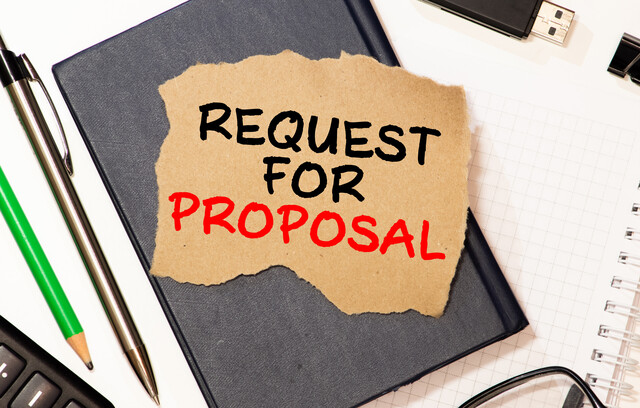Appropriate Tone in Business Communications
Written communication is vastly different from verbal communication, especially in a business environment. Written communication has room for deliberation, revision, and correction, a luxury that verbal communication does not provide. Always review and proofread your own business writing for grammar, punctuation and spelling mistakes, because once a written document such as an e-mail, letter, or memorandum has been sent, your communication is saved for posterity. You cannot correct or improve upon it once it has been dispatched.
Tone and language are tricky things to deal with when it comes to written communication. When you talk to someone, the
person's body language, tone of voice, intonations, eye contact, pitch, and general demeanor give you essential clues about what the other person is feeling. You modify what you are saying based upon these clues. In written communication, this instant give-and-take of
nonverbal signals is not possible. In written communication, it is intuitiveness and instinct, coupled with an eye for detail, that can help you deliver your message effectively. Achieving the effect that a verbal exchange has on other people is possible in written communication; it is known as
tone.In writing, tone is defined as the writer's attitude toward the reader and the subject of the message. The overall tone of a written message affects the reader just as one's tone of voice affects the listener in everyday exchanges.
As a writer, it is essential that you learn to adjust your tone according to the circumstances. While business communication is more formal, you should know
when to be assertive, conversational, cajoling, or apologetic, depending on the situation. For example, if you are writing to an individual reader, chances are that she or he will prefer a more direct, personalized, and friendly tone in your writing. However, when you are writing to a group of seniors, a certain level of professionalism, combined with a conversational style, is recommended.
Here are a few questions to ask yourself when setting the right tone for your work-related writing:
-
What is the purpose of this document? Why am I writing it?
-
Who is my reader, and what does he or she stand to learn from my writing?
Tone is a difficult thing because there is no "right" way to do it. The same thing can be interpreted differently by different people, which makes tone a subjective thing.
Take a look at the sentences below and classify the tones used according to your understanding:
You have to finish the project by the day after tomorrow. If you fail in doing so, we might lose the client and that will not be good for us!
The project completion deadline is the day after tomorrow; a failure in completing it might result in the loss of a client.
Richard, this client is important to us, and we cannot afford to lose this account. This project needs to be completed by the day after tomorrow; hence, we are assigning it to you. Please let us know if you want any further details.
All three statements are correct. The same thing is conveyed in three different tones, and it appeals to different people. Some might think the first sentence is too direct and even threatening to a certain degree, while others might just call it direct. Some people might call the second sentence stuffy and bureaucratic in language, while others will accept it as the right tone for business communication. The third paragraph by far will be the most acceptable to people; it is courteous and has positive overtones. It has a subliminal message: "Richard, we know only you have the ability to meet the deadline, and we are depending on you." It makes a person feel motivated and appreciated without losing the essential meaning: the importance of the project deadline.
Setting the right tone for any document is dependent upon an individual's ability to understand readers and fine-tune the communication according to their needs. Writing from the reader's point of view always helps. When deciding on the tone, choose one that is most appropriate to your reader. A good cue in deciding the tone is to evaluate the way a person's previous correspondence to you reads and base yours on the same tone.
The great American writer John Steinbeck said: "Your audience is one single reader. I have found that sometimes it helps to pick out one person... a real person you know, or an imagined person -- and write to that one."
When you are writing the business document, keep the following things in mind:
-
Always be confident.
-
Be sincere.
-
Use appropriate words and avoid jargon.
-
Avoid discriminatory language.
-
Always stress the positives and the benefits for the reader.
-
Write in an active voice instead of a passive voice.
-
Be friendly but maintain an appropriate level of professionalism.
-
Be sensitive to cultural differences between you and your reader.
-
Use neutral job titles.
-
Avoid using masculine pronouns if addressing a mixed audience.
-
Use a neutral salutation if you do not know the gender of your reader.
When it comes to tone of voice while conveying a negative message, the situation becomes more difficult. Anger, jealousy, frustration, and cynicism are a few things that should be avoided if you want to get the tone right. Negativity is easily intercepted by a reader.
If you think your writing has some negative connotations, do the following:
However, if you do need to convey some bad news via written communication, keep it professional. Using a neutral tone while delivering bad news might be a good idea. Here are a few examples:
|
Don't
|
Do
|
|
I can't allow anyone in the organization to come late on a daily basis. I can't allow such behavior.
|
We encourage punctuality, and we urge you to be on time on a regular basis.
|
|
We can't offer you this position because you don't match our requirements.
|
Unfortunately, we do not have an appropriate opening in our company at the moment that can utilize your skills.
|
Tone is an ambiguous thing, and even the best intentions can be misinterpreted. The mantra to stay out of trouble is to revise, revise, and revise your document before you send it.
If you think a word or phrase might be misconstrued, promptly change it.
Some final tips:
1. Do not come across as a patronizing boor. Avoid words and phrases that might make you sound insincere, such as "honestly," "certainly," and "basically." Also avoid sports analogies and dated pop culture catchphrases, including, "Don't go there."
2. Skip the jargon if you want to sound smarter. You will not impress anyone by peppering your writing with industry phrases and acronyms. You will make a stronger connection if you explain things clearly to people. Short-speak is creeping into office communications, possibly from text messaging. Do not write that way on business documents.
3. Spice up your statistics so people will care. When you have statistics and numbers to relay, do not just throw them out there. Paint a picture for your audience about what the numbers mean, what the figures represent, what the statistics say.
4. Always take time to say why. Make the effort to explain why people should care about what you are writing. Never assume that they will make the same assumptions you are making or that they will reach the same conclusions you have reached.































